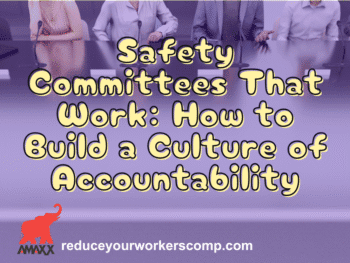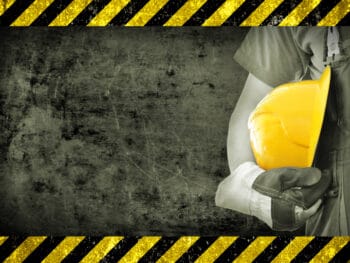Falls from heights and elevated surfaces continue to be a driver in workers’ compensation costs across the United States. Now is the time for employers and other interested stakeholders to take a stand against falls. It will not only reduce workers’ compensation program costs but increase morale within the workplace.
Click Link to Access Free PDF Download
“4-Step Sequence For Effective Employee Screening, Hiring, & Placement”
A Case Study in Preventable Workplace Falls
Falls within the workplace continue to be the leading cause of workplace deaths despite improvements and availability of cost-effective safety equipment. This is mainly prevalent in the construction industry where workers engage in daily activities in a variety of settings and conditions. This includes smaller residential construction projects, which account for a disproportionally high number of catastrophic workers’ compensation claims. Preventing these incidents all starts with a proactive contractor dedicated to improving the safety on their job site.
Preventing falls from heights and elevated surfaces can be prevented by simple strategies:
- Advance planning that includes understanding the job site and unique conditions employees might face when performing their work activities;
- Making sure all employees and others on a construction site have the necessary safety equipment. This includes making sure the equipment is properly working and free from defect; and
- Providing the necessary training on how to correctly use the safety equipment used in the workplace. A surprising number of work injuries and deaths occur when this equipment is not correctly used by employees.
Communication is Key!
The first step in preventing falls in the workplace is communication. When it comes to workplace safety and a known safety risk, interested stakeholders can never communicate to its workforce enough. This communication must also be effective. Steps contractors can take should include:
- The need for buy-in on safety and the expectations of all stakeholders from the beginning. This includes a commitment to working with employees and independent contractors before a project starts;
- All employees need to have the right equipment when work is performed at elevated surfaces and heights. Expectations also need to be set for independent contractors who will work on a project; and
- Proper training that is constant and effective. This must include teaching new employees and veterans the importance of workplace safety and how to use the equipment. Consistent enforcement and immediate discipline for those who choose not to follow safety procedures is
The involvement of labor unions is also important. Contractors and unions should have a common goal of promoting safety and avoiding falls from heights. One step both sides can take is to promote the sharing of ideas and creating an atmosphere to create a safe working environment. Reasonable accommodations should be made when implementing protocols and using equipment to prevent injury and death.
Operation Stand-down: Taking the Next Step in Workplace Safety
Interested stakeholders can also participate in the “National Safety Stand-down to Prevent Falls in Construction” project, which takes place May 7 – 11, 2018. This is a time designed to bring awareness to the inherent dangers of working at heights, evaluating safety concerns on current job sites and implementing effective strategies in the future.
Useful resources are available for employees and employers at the following website: https://www.osha.gov/StopFallsStandDown/resources.html. This free resource contains easy to use information such as posters, hard hat stickers and other resources to educate all interested stakeholders on easy to implement strategies. It also has useful information to improve training programs when using ladders and scaffolding. It also includes information on how to properly use personal fall arrest systems (PFAS). This information is also available in other languages for employees who do not use English as their primary language.
Conclusions
Falls within the workplace continues to be a significant driver in workers’ compensation costs. Notwithstanding free resources available to interested stakeholders, injury and death from falls continue to drive program costs. Now is the time to be proactive on this issue. Effective and constant training can reduce costs, but also improve workplace morale.

Contact: mstack@reduceyourworkerscomp.com.
Workers’ Comp Roundup Blog: https://blog.reduceyourworkerscomp.com/
©2018 Amaxx LLC. All rights reserved under International Copyright Law.
Do not use this information without independent verification. All state laws vary. You should consult with your insurance broker, attorney, or qualified professional.
















